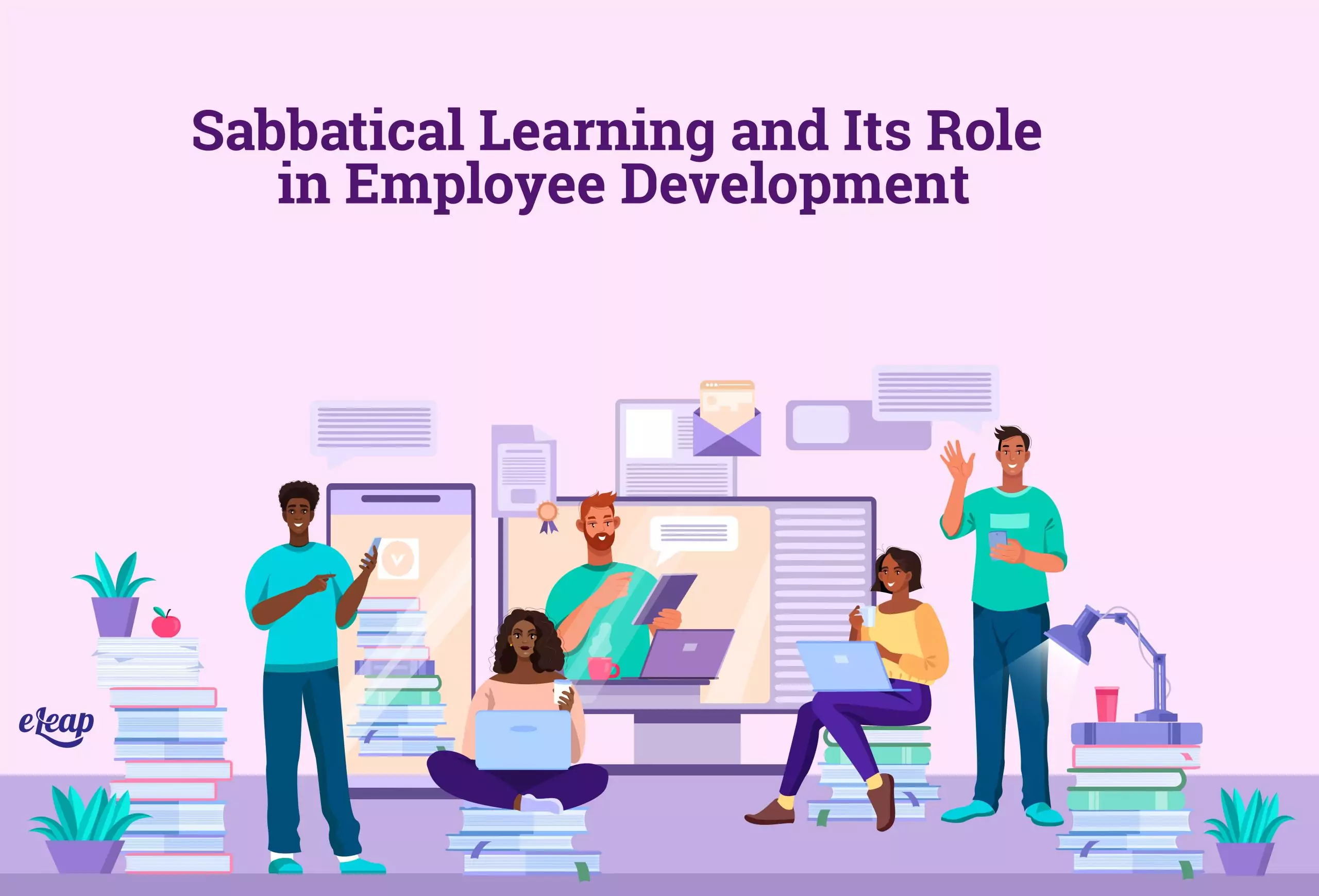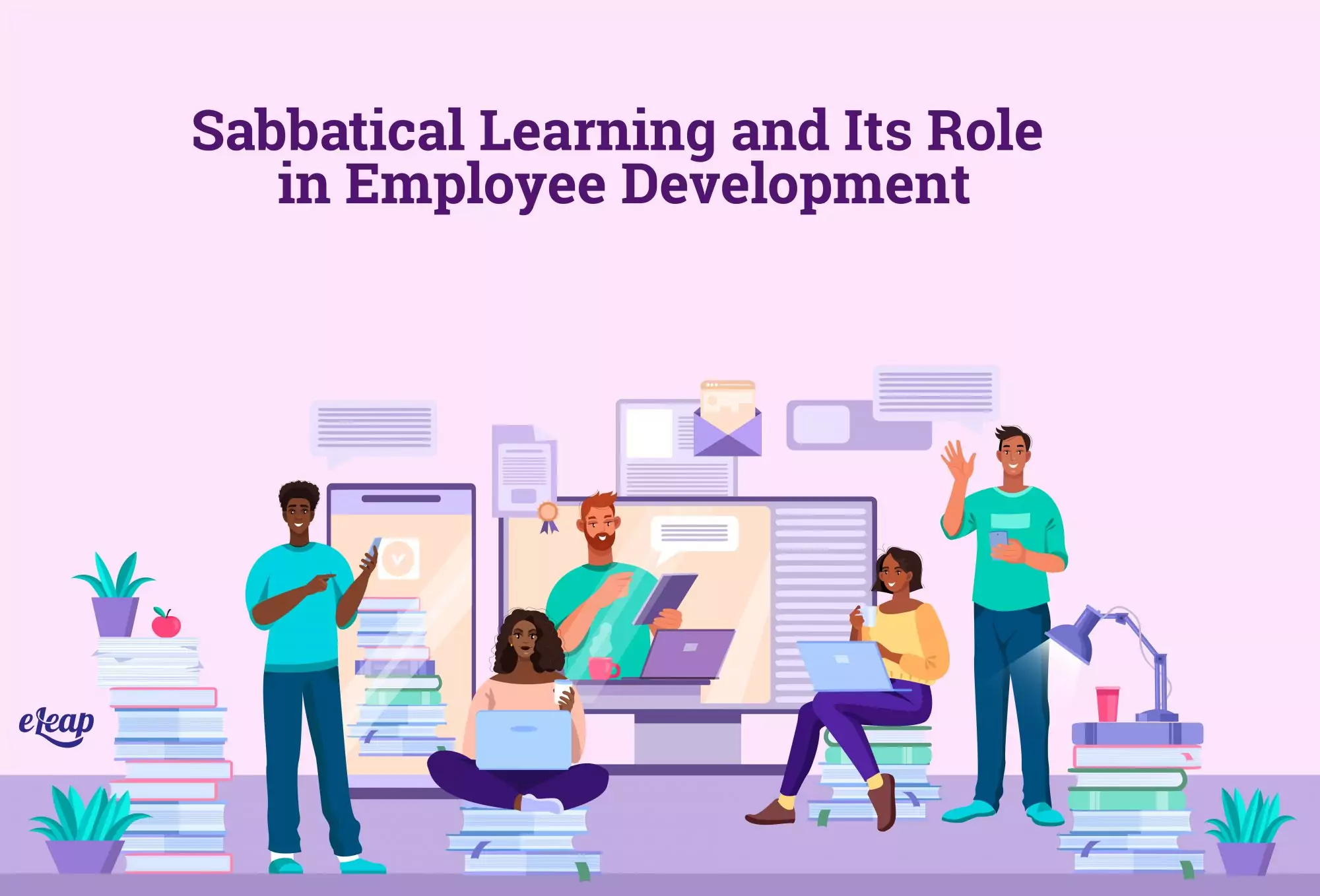Sabbatical Learning and Its Role in Employee Development

When it comes to employee development, do you immediately think of your LMS? That’s natural, and today’s learning management systems can offer an immense amount of value and traction. However, you should also look beyond defined modules and courses when it comes to in-depth employee development. One tool that you may not have considered (or even be aware of) is sabbatical learning.

What Is Sabbatical Learning for Employee Development
A sabbatical is nothing more than a planned leave of absence from an employer. Once, they were undertaken by many professionals in a wide range of industries, although they have become rarer over time. What separates a sabbatical from a vacation? There are several key characteristics here:
- Sabbaticals last longer than vacations, usually between four and 10 weeks.
- Sabbaticals are undertaken for a specific purpose, such as volunteering, learning new skills, etc., rather than simply for “destressing” or relaxing.
However, perhaps the most important difference is that sabbaticals provide an employee with an unparalleled opportunity to immerse themselves in a new environment and develop themselves. This is because the employee gets a complete separation from their role on the job, allowing them to focus 100% on development. Here are some examples of learning and development through complete immersion:
- Learning Chinese by visiting China allows not only for language mastery but to form a deep understanding of the culture.
- Leading an expedition on a mountain trek helps hone leadership skills that can be employed in any other situation.
- Volunteering to build a water delivery system for a rural, economically disadvantaged area provides not just new physical skills but helps an individual achieve new insights into human nature and even their own sense of purpose.
Is a Sabbatical Paid Time Off?
Sabbaticals can be either paid or unpaid. Some people may choose to use paid leave time for this purpose, while others might prefer to use their own money. Of course, the question of paid versus unpaid leave affects who can and who cannot take a sabbatical. With most employees these days living paycheck to paycheck, unpaid leave for a sabbatical is an increasingly unrealistic expectation. Few people have the financial means to take a month or two off of work for growth and development, at least not without some sort of support from their employer.
Who Is a Good Fit for Learning via Sabbatical?
In addition to the question of whether someone can afford the time off or if the employer will continue to pay them during the sabbatical, there’s the question of suitability. Who is a good fit here? Can anyone benefit, or is sabbatical training better suited for specific positions within the organization?
The truth is that anyone can benefit from a sabbatical, but not everyone may be able to bring new skills to bear within the organization. Therefore, it becomes important for HR and other decision-makers to look at the direct applicability of skills and knowledge within an employee’s role in the organization when setting sabbatical priority.
For instance, someone who has been on the same career trajectory for several years would be a better fit than someone who only moved into a particular career path recently. This is because someone who’s been on the path for a long time shows deep commitment, but also because these are the individuals who are most likely to need a prolonged break from those responsibilities.
We also need to return to the value of the investment offered by a sabbatical. An employee who is a high-performing contributor to the organization is probably a better investment when it comes to paid time off for a sabbatical than someone who does not perform well or in whom you have doubts when it comes to loyalty to or longevity with the company. Put another way, you’ll see better ROI if you invest in employees who routinely perform well and who are committed to their position than you will by investing in employees who might leave soon to pursue employment elsewhere or who have had performance problems in the recent past.
What Benefits Does Sabbatical Learning Offer?
We briefly touched on the benefits of sabbatical learning previously, but there is more that you should know to make an informed, accurate decision here. Taking a sabbatical can provide employees with the opportunity to:
- Learn new skills and/or knowledge that can be applied directly to their position within the organization
- Gain new perspectives and insights that will make them more capable within their current role in the organization or better suited to a higher role
- Develop a new view of the world that allows them to bring new capabilities or problem-solving abilities to bear in their role
- Increased focus and clarity that drives improved outcomes for the business
- Increased awareness and value of cultural differences and how diversity enriches the human experience
- Reignite their passion for the organization and their role within it, which drives not just better performance, but improved outcomes overall
- Accelerate skill development, which is a crucial consideration when it comes to the key employees within your organization
- Helps improve succession planning, thereby reducing onboarding costs as well as the complexity of training and development
- An improved ability to develop leadership in-house, deepening your bench and creating a more robust organization overall
- Increasing goodwill with employees, but also with the public, particularly if the sabbatical includes volunteer work
- Creating a sense that your organization is an employer of choice, which helps support improved recruiting and talent retention
Is It Time for a Sabbatical?
As you can see from the information above, sabbaticals can offer invaluable benefits. Those apply to the employee but also the employer. It’s a win-win for everyone involved. However, planning sabbaticals requires that you know who is a good fit for this type of learning and development, as well as a commitment from all stakeholders to support the learner (both financially and through other means).